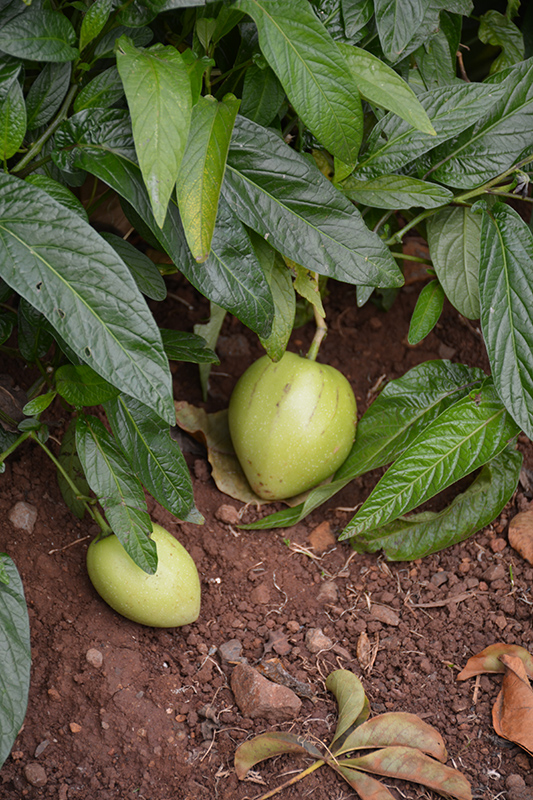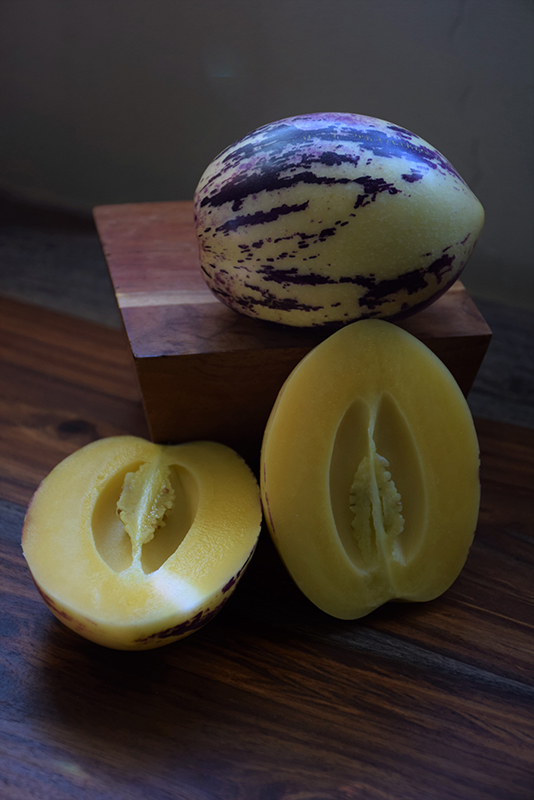Height: 3 feet
Spread: 3 feet
Sunlight:
![]()
Hardiness Zone: (annual)
Other Names: Pepino Melon, Pepino Dulce, Melon Pear
Description:
A unique, bushy variety sure to turn heads in containers and hanging baskets; produces 5" egg shaped fruit that are buttery yellow with striking purple stripes; sweet and mild, like a melon crossed with cucumber, delicious for fresh eating and preserves
Edible Qualities
Pepino is an annual vegetable plant that is commonly grown for its edible qualities. It produces buttery yellow oval fruit with purple stripes which are typically harvested when mature. The fruits have a sweet taste and a fleshy texture.
The fruit are most often used in the following ways:
- Fresh Eating
- Eating When Cooked/Prepared
- Preserves
Planting & Growing
Pepino will grow to be about 3 feet tall at maturity, with a spread of 3 feet. This slow-growing vegetable plant will behave as an annual in our climate, which means that it can be expected to grow for one season in your garden and then die after producing a crop. While it is considered to be somewhat self-pollinating, it tends to set heavier quantities of fruit with a different variety of the same species growing nearby.
This plant is typically grown in a designated vegetable garden. It should only be grown in full sunlight. It does best in average to evenly moist conditions, but will not tolerate standing water. It is not particular as to soil type or pH. It is somewhat tolerant of urban pollution. This species is not originally from North America, and it is considered by many to be an heirloom plant.
Pepino is a good choice for the vegetable garden, but it is also well-suited for use in outdoor containers and hanging baskets. Because of its spreading habit of growth, it is ideally suited for use as a 'spiller' in the 'spiller-thriller-filler' container combination; plant it near the edges where it can spill gracefully over the pot. It is even sizeable enough that it can be grown alone in a suitable container. Note that when growing plants in outdoor containers and baskets, they may require more frequent waterings than they would in the yard or garden.

